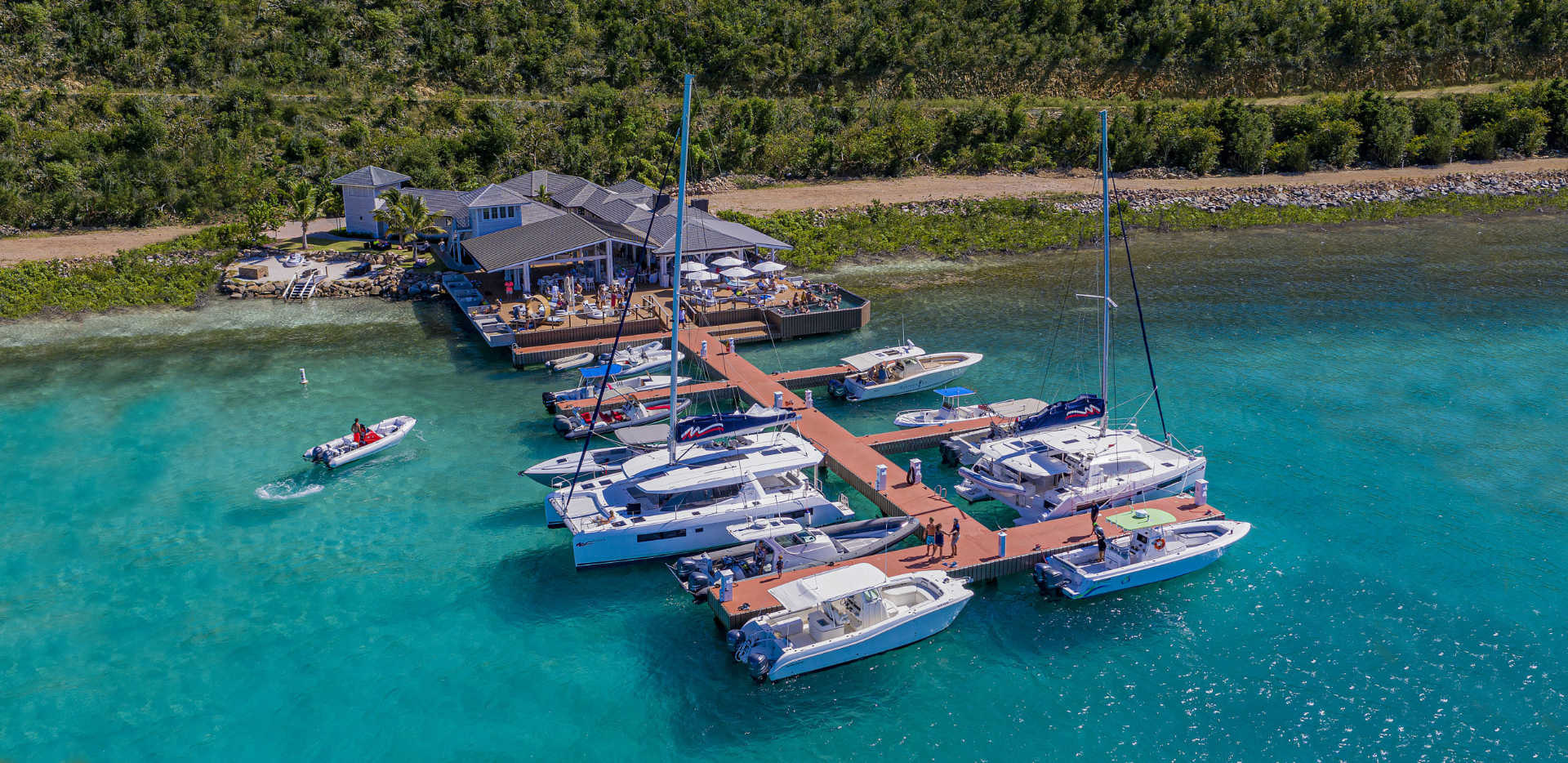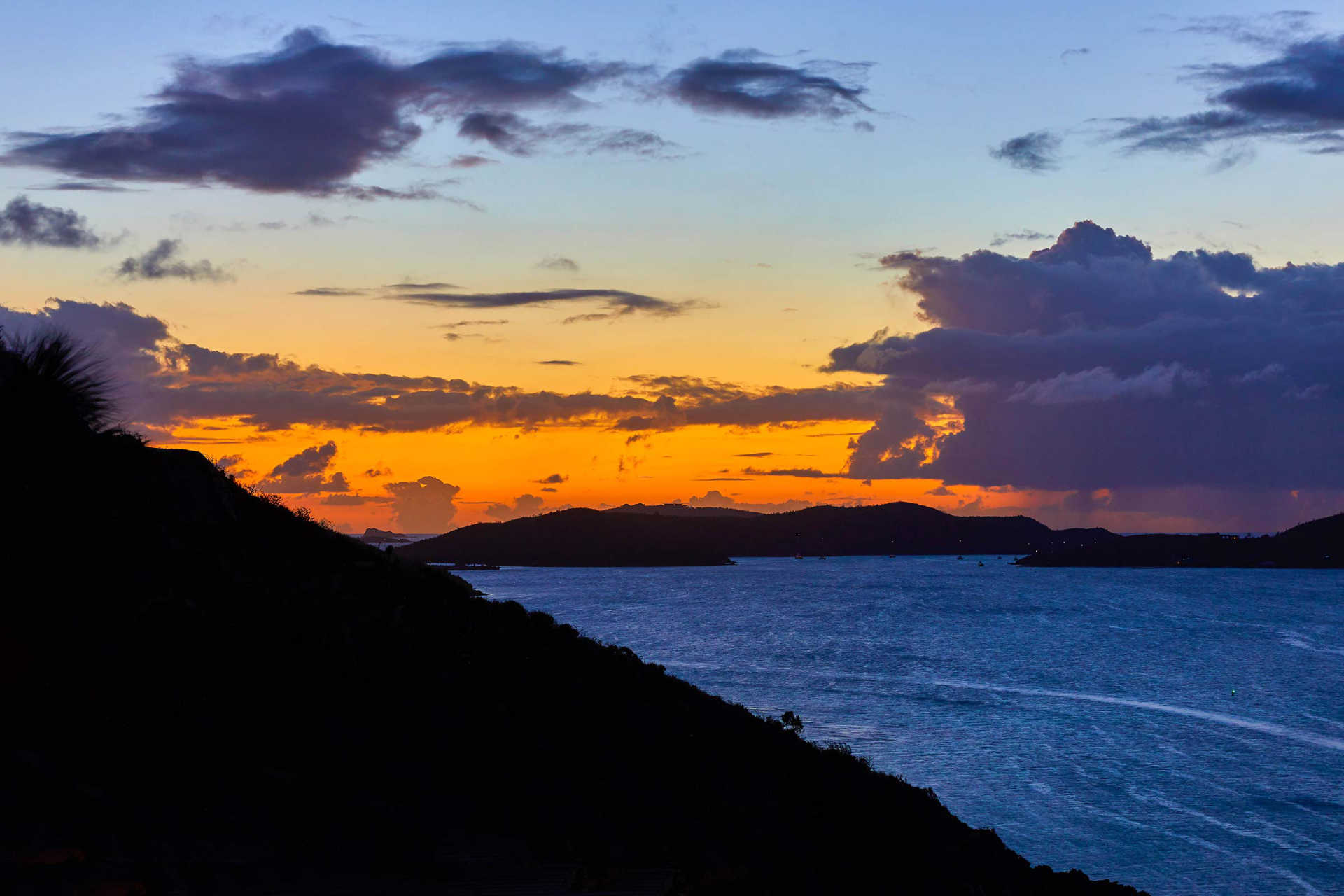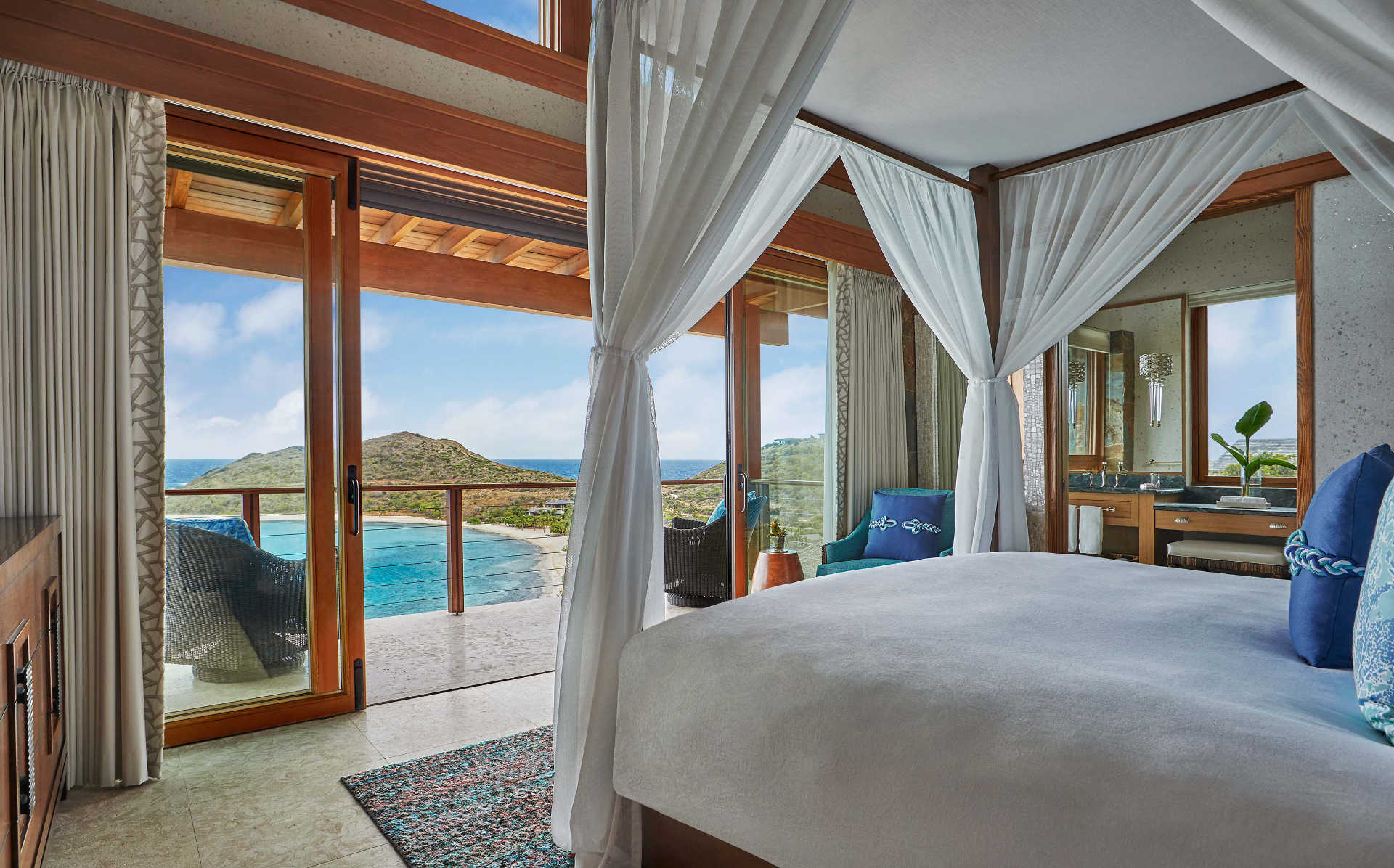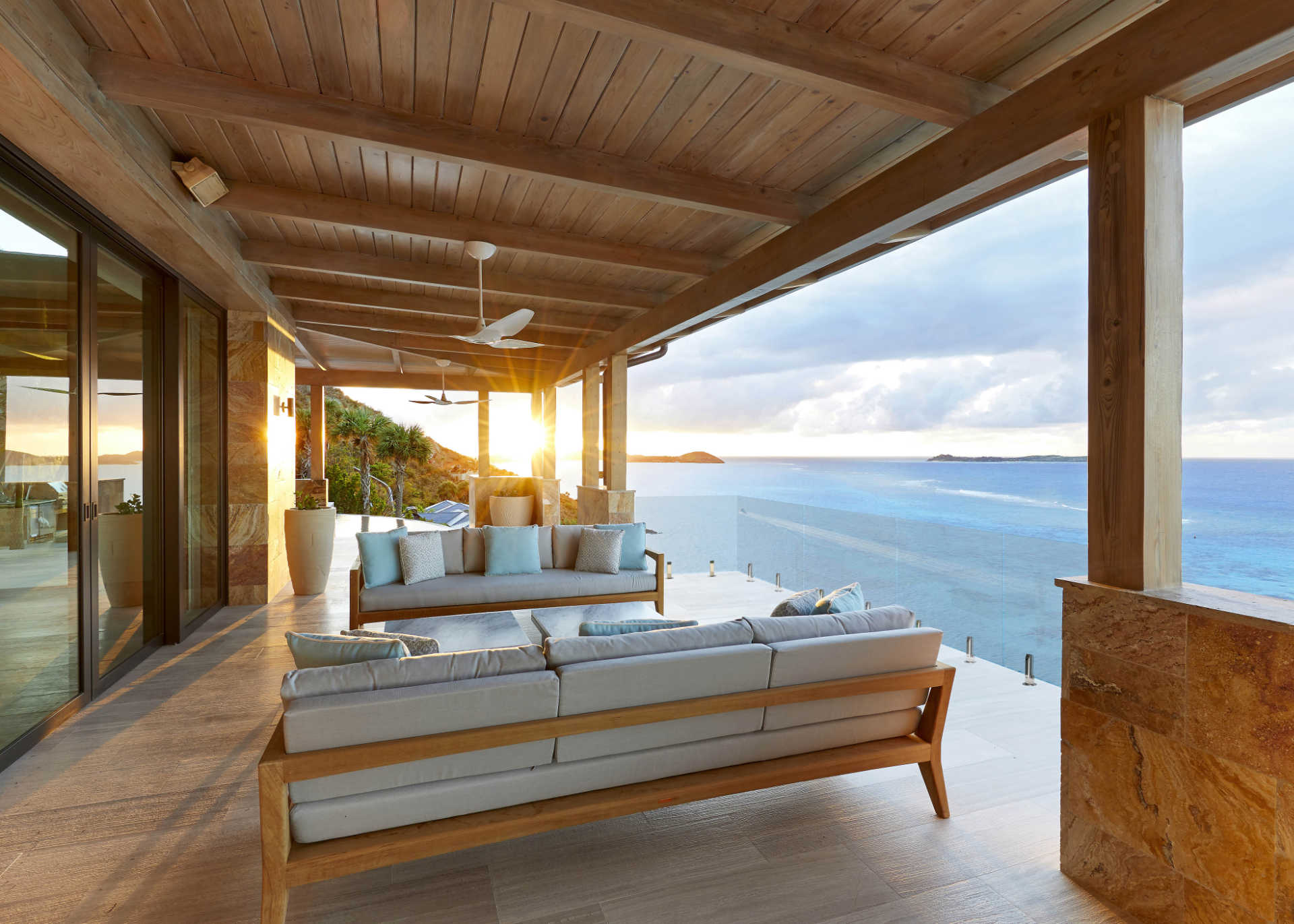The Times
Yachting in the British Virgin Islands
Louise Roddon combines a catamaran tour of tiny bays and empty beaches with a swish stay on Virgin Gorda
Rough seas are pounding the southwest coast of Virgin Gorda, and from a swish catamaran — my home as I am yachting the British Virgin Islands — I can just make out a red flag flying above Devil’s Bay.
It is hardly a tempting sight for a swim, and a big part of me would prefer to laze on deck, enjoying the sight of the island’s nibbled coastline. Yet we have dropped anchor here early specifically to avoid the crowds, our skipper recommending a trek round the Baths — Virgin Gorda’s popular maze of giant granite boulders.
“We’ll moor the dinghy in the next bay where it’s safe,” he says. “Then all you have to do is cross that short stretch and you’ll reach the start of the trek.”
Alongside fabulous beaches and great snorkelling, it is unusual sights such as these boulders that draw visitors to the green and scattered British Virgin Islands (BVI) in the Caribbean. Bar the odd rough day like today, for sailors they remain one of the easiest of groups to navigate. In high season, steady trade winds meet with the 35-mile-long protected thoroughfare of St Francis Drake Channel, and good anchorages are plentiful.
This is a best-of-both-worlds break combining an affordably luxurious voyage around deserted and inhabited islands with R&R at the Oil Nut Bay resort on Virgin Gorda.
Chartering is famously expensive here, and experienced sailors may find the idea of affordable luxury a little far-fetched. A similar catamaran to our one-year-old Ipanema 58, sleeping 12 and fully staffed, will cost just short of £23,000 for a week’s private hire. Yet I am trying out one of Dream Yacht Charter’s “by-the-cabin” sailing holidays, and at £976pp all-inclusive, my week truly does represent value.

Naturally, we had all nursed misgivings about sharing with potentially incompatible strangers, yet we are an affable group. Ranging from forty and fiftysomethings to three seventy-pluses, we comprise five Swiss, two Italians and me. With two French crew — skipper Christian and the chef Jereme — conversation is primarily Gallic, with a smattering of English thrown in to make me feel at home while yachting in the British Virgin Islands.
Even better, as we are only eight, the catamaran feels surprisingly pampering for the price; my en suite double cabin, decked out in a clever arrangement of blond wood cupboards and drawers, is spacious and comfortable. The top deck has mushroom-toned squashy sofas and day beds, and despite working in a tiny galley space, Jereme conjures up seriously good lunches: chicken Caesar salads and sky-high juicy burgers; three-course dinners of chilled melon soup, prawn risotto, the occasional perfectly grilled tuna; and exquisite puds such as banana and coconut tart.
Friendships quickly form, chilled cans of Carib beer and bottles of Chilean chardonnay are drained and snorkelling brags traded over dinner.
Three of us brave those choppy waters, preparing to slip out of the dinghy and head for a trek round the Baths. Within seconds, a huge wave engulfs me, and I’m flipped and pummelled like a dishcloth in a tumble dryer, before being deposited in an ungainly heap on the sands. Save for the whispering of foam against shore, the contrasting silence is profound, the charm of those sea-sculpted boulders quite beautiful, their dark acoustic caves flashing occasional glimpses of blue sea through slender fissures.

The beauty of yachting in the British Virgin Islands on a charter, I’m quickly discovering, lies in its flexibility. Anchoring alongside a deserted island, we frequently snorkel or snooze before breakfast, sail to another for lunch with yet more snorkelling, then end up at a buzzy island for evening drinks. Sometimes — as at White Bay, the most striking beach on Jost Van Dyke Island — we encounter too many drunken Americans, propping up the infamous Soggy Dollar bar, to have any chance of relaxing drinks. We opt for quieter cocktails on deck. “No problem,” Christian says, with a Gallic shrug. “It’s your holiday. You choose what we do.”
And so our week unfolds. Tracing a loop that takes us from the tiny Scrub Island to unfathomably deserted beaches, we encompass remote anchorages and quieter “out islands” (a local term for the less touristy uninhabited islands, such as Norman Island and Sandy Cay) that cruise ships cannot reach. Privately owned retreats too, such as Guana Island, where rainforests form a thick perm over its slopes, dropping to an empty beach and a turtle-scattered sea of clearest green.
It takes us two hours yachting in the British Virgin Islands from Jost Van Dyke to Norman — the BVI’s largest uninhabited island. This was supposedly the inspiration for Treasure Island, and it is easy to imagine bounty hidden within its string of caves. Our mooring here, near the aptly named Treasure Point, yields spectacular sealife: googly-eyed blue tangs; schools of yellowtails pouting then darting off when I try to tickle them; and, patterning the rocks beneath, scarlet sea fans and brain corals.
My swim towards the mouth of the cave is accompanied by sergeant majors, shimmying like marine wasps; then the light changes, becoming a dancing fretwork across the opening, leading to an eerie darkness that, without a torch, I do not dare explore.
Back on board, Christian unfurls the sails as we head for Anegada. The wind beats a soothing rhythm against the mainsail, and within seconds we are all asleep.
Pancake-flat Anegada, which is fringed with clear jade shallows, has an altogether different atmosphere. Some explore by scooter, looping around its coast road; I take a stroll to the interior lagoons, where flamingos shimmer in distant reaches. And, since Anegada is famous for its crustaceans, that evening several of us head to the Lobster Trap, for a delicious feast of grilled, spice-rubbed lobster served with baked potato (£31).

Lovely as all our anchorages have been, I am more than happy to swap my sea legs for terra firma. Dropping in on private islands, you are invariably restricted to the beach. Signs warn you not to go farther, so once I reach Oil Nut Bay on Virgin Gorda, it feels liberating to yomp freely over its 400 acres.
Set over a peninsula at the top of the island and owned by David V Johnson, an American developer, this 11-year-old resort is one of the few places not deeply scarred by Hurricane Irma in 2017. My boat ride here — from Scrub Island by Oil Nut Bay’s private water taxi (you can reach the resort only by helicopter or boat) — took me past scoured neighbouring isles bristling with cranes, the sound of hammering ringing through the sea air.
In contrast, the privately owned villas here suffered little more than a shattered windowpane or two.
And goodness, it’s an idyllic set-up, with elegant retreats scattered over seven neighbourhoods, spaced far enough apart A so as not to be overlooked. Low-roofed and stone-clad, they blend with the surrounding peaks and scrub-covered slopes, and most can be rented when the owners are not in residence. I am in one of three cliff suites carved into the rocky southeastern peninsula stretch, and its three enormous rooms have an elegantly muted New England feel. Huge picture windows overlook the hectic seas of Lower Soldier Bay. My terrace, outdoor shower and plunge pool are cooled by strong breezes. I have a buggy to get around the estate, and over three days I zip up to lookouts such as Pajaros Point, gazing over a panorama of rough ocean alternating with the calmer turquoise Caribbean.
Humpback whales regularly feed here (someone spotted a mother and her calf during my stay), and scanning the waves quickly becomes an obsession. Each morning I draw back the curtains and grab my binoculars. In my imagination, every scuff of foam heralds a whale’s blowhole — but I am not in luck.

No matter. There are other delights. The heart of Oil Nut Bay unravels from its chic marina (where, one lunchtime, Richard Branson is at a neighbouring table) to a breezy poolside Beach Club restaurant facing the Caribbean. Above this is the palm-thatched Asianfusion Pavilion restaurant, where beneath star-freckled skies guests gather for spicy cocktails and sharing plates around flickering firepits. There are grass tennis courts, a kids’ club, fitness room and all manner of beach toys, from snorkelling equipment to Hobie Cats. In-room beauty treatments too; I experience a fantastic deep-tissue massage.
One early morning I swap my buggy for a heart-pounding yomp, the air sweetened by wild thyme and sage. Pelicans skim across Deep Bay, and just beyond, I spot Spanish Town, the island’s small settlement. Although the whales remain elusive, snorkelling is as rewarding as it was yachting in the British Virgin Islands. Hovering above a greenback turtle fashioning a concave nest into a sandpit will be an image that endures for a long time.







